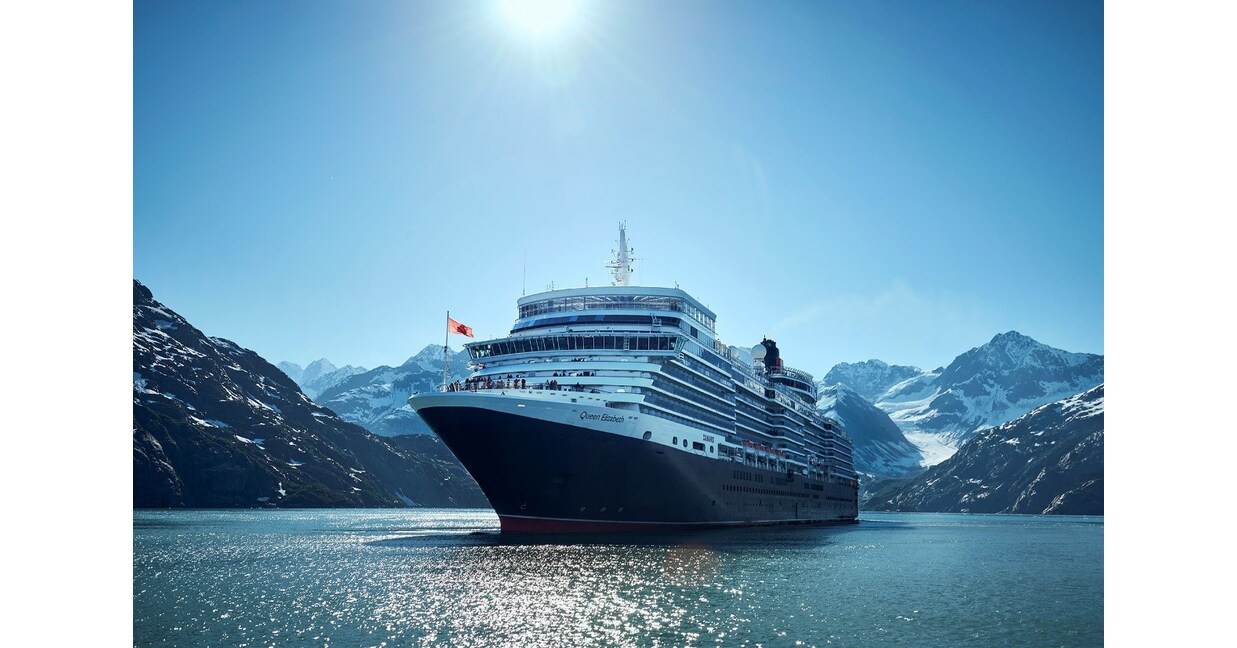Part of a continuing weekly series on Alaska history by local historian David Reamer. Have a question about Anchorage or Alaska history or an idea for a future article? Go to the form at the bottom of this story.
In over a century, Anchorage has inspired a wide range of songs, albeit not as many as you might think. These are songs explicitly about Anchorage, with one minor exception. Many more songs have been written by artists in Anchorage, artists from Anchorage, or otherwise inspired by Anchorage. Some of these examples here are good. Some are bad. And at least one is simply bizarre, though personal mileage will vary.
The Dec. 16, 1943 Anchorage Daily Times issue included this little note among its birth announcements: “A 7 pound, 1 ounce girl, Cheryl Marie, was born to Mr. And Mrs. Jack M. McConkey at 12:20 o’clock this morning at Providence hospital.” Jack was a soldier at Fort Richardson. More importantly for this article, Cheryl’s grandfather was songwriter William H. Curtis. With David Ahlstrand, Curtis penned “Send Me a Picture of Our Little Girl.” Almost 80 years later, Cheryl’s grandson, musician Travis Frank, recorded a version with Leonoor Rinke de Wit on vocals.
As the song exclaims, “Send me a picture of our little girl, she’s the best girl we ever had. She’s the cutest youngster you ever did see, and she looks like her mom and dad.” It feels churlish to point out a tiny error but to thine own self be true. The song further declares, “It was in a naval hospital, and it was surely a good place to be, the doctors and nurses there they all loved her too.” However, Cheryl was born at Providence, a private hospital in an Army town. In 1943, Providence was located near the western end of the park strip, Delaney Park.
During the slow march to statehood, curiosity in Alaska rose across the country. There were movies, television shows, and novels, but novelty songs were among the more notable attempts to cash in on the phenomena. From just 1958 to 1960, as interest in Alaska peaked, there was “Alaska vs. Texas” by Lawton Williams, “Alaska Rock” by the Rebelaires, “Welcome Alaska” by Larry and Dixie Davis, “Alaska the 49th Star” by Freddie Bearden, “The Cool Alaska Rock & Roll” by Peter Lind Hayes and Mary Healy, and “Midnight Sun Rock” by Yukon balladeer Al Oster among many others.
“Song of Anchorage,” released in 1957, was one of several such brass ring efforts by Johnny and Betty Jo Starr. They lived in Palmer for a while before moving to Montana in 1953. They tried repeatedly yet never had that breakthrough hit. Songs like “Copper Colored Klootch,” “Eskimo Boogie,” “I’m a Cheechako,” “Son of a Sourdough,” “Song of Fairbanks,” “The 49th Star” and “When the Ice Worms Nest Again” came and went with little to no notice.
Credited to Betty Jo Starr and the Alaskans, “Song of Anchorage” is heavy-handed to the point of cringe in its attempts to ingratiate itself with Anchorage residents. “There’s a town in Alaska, the greatest of all, filled with wonderful people, that answered her call. On the banks of Cook’s Inlet, was this city brought forth, called Anchorage, Alaska, the Queen of the North.” Or, there’s when Betty Jo sings, “There’s a smile on each face, no stranger you meet, as you drive down the highway or walk on the street. There’s a sign that reads welcome, on each entrance to town. No friendlier city is there to be found.”
The strangest and most mysterious song about Anchorage is an untitled, uncredited piece in the 1960 short documentary “Land of White Alice.” White Alice refers to the White Alice Communications System, the 1950s to 1970s relay of national defense early warning and telecommunications stations across Alaska. The film was produced by Western Electric, which designed the White Alice system.
For a 27-minute documentary primarily focused on remote radio stations, the film spends a surprising amount of time masquerading as a travelogue. Kotzebue and Anchorage receive special coverage. And during the section on Anchorage, a strange song plays. “What’s that name? Anchorage, like an anchor.” It comforts new arrivals. “It’s not very far, but whatever you desire, is easy to acquire in Anchorage!” An exclamation of “Just north of Seattle” will confuse anyone familiar with geography and the finer details of distance. And the accompanying footage is dominated by bars and two soldiers leering at passing women. It must be experienced.
Blue Ervin quickly released “Alaska Earthquake” after the March 27, 1964 Good Friday earthquake. “Blue Ervin” was Ervin C. Elswick, an Army sergeant then stationed in Anchorage. The song is a straightforward account of the earthquake eager to pat Alaskans on the back for not dying. “Anchorage and Whittier, Seward and Kodiak, all suffered greatly when the earth began to crack. They all are rebuilding their homes and stores once more, for these are great people, living on Alaska’s shore.”
In 1968, Alaska Airlines produced a musical to promote travel to the 49th state, part of their Golden Nugget promotions. “It’s Alaska” featured songs composed by Elizabeth Firestone Willis and performed by the Harry Simeone Chorale. Willis was an established musician with a litany of professional credits, as well as the wife of Alaska Airlines president Charles Willis. The musical was a tour of the state featuring simulated airplane takeoffs and landings. It traveled the country before union strife ended its run months early.
Later that year, an album was released featuring a little song called “Anchorage Town.” Indeed, “Everything is moving up in Anchorage town. All year round excitement can be found.” Also, did you know “Summer means you hunt. Winter means you ski. There’s dancing all around the town.” It is a baby-kissing, hand-shaking politician of a song, albeit with a bit of a swinging beat.
During the summer of 1969, the Youngbloods played the Idle Hour in Anchorage by Lake Spenard. Their most popular release by far was “Get Together” written by Chet Powers of the psychedelic rock bank Quicksilver Messenger Service. It is a quintessential late-1960s song, used by movies like “Forrest Gump” and “Fear and Loathing in Las Vegas” to evoke an ephemeral, fleeting spirit. “Come on, people now, smile on your brother, everybody get together, try to love one another right now.” Inspired by their time in Anchorage, they released “On Beautiful Lake Spenard” in 1970, a contemplative to celebratory instrumental piece.
In 1978, Japanese singer Aki Hitomi released her debut single, “Anchorage Keiyu Paris Iki (To Paris Via Anchorage).” Beginning in 1960, Japan Airlines offered a route to Paris with a refueling stop in Anchorage. That journey was popular enough that the itinerary became entrenched in the Japanese cultural landscape.
The 1985 “Environmental Song” by Anchorage punk band Clyng-Onz is more about Alaska generally and a certain type of Alaskan specifically than Anchorage explicitly. “People out here all look the same. REI clothes are kinda plain. We gotta get out before we go insane.”
And of course there is Spenard legend Mr. Whitekeys. The longtime Fly By Night proprietor and musical comedy performer is perhaps best known for his Whale Fat Follies. His frequent shots at Anchorage include the representative “Hooker in Spenard.”
I wanna be a hooker in Spenard,
I mean that job can’t be all that hard.
You just stand in the shadows of the sleazy bars
And flash your goods at the passin’ cars.
What a job, just lie back and relax—
No union dues, no income tax.
Perhaps the most serious example on this list is “Anchorage” by singer-songwriter Michelle Shocked. It was the first single from her 1988 major label debut album, “Short Sharp Shocked.” The song is in the form of a letter between two friends getting back in touch after a couple of years apart.
I took time out to write to my old friend / I walked across that burning bridge / Mailed my letter off to Dallas / But her reply came from Anchorage, Alaska.
She said: Hey girl, it’s about time you wrote / It’s been over two years you know, my old friend / Take me back to the days of the foreign telegrams / And the all-night rock ‘n rollin’ / Hey Chel, we was wild then.
It was real friends and an actual letter. “Chel” is Shocked. The other friend is Kelli Bingham. They met each other in Dallas but lost contact. Bingham’s husband found work in Anchorage and moved the family north. Shocked, meanwhile, had a more itinerant lifestyle, living in San Francisco, Amsterdam and New York. In a 1988 interview with WFUV in New York, she said, “I really took the letter that she wrote me from Anchorage. I cut it up. I pasted it, and I added the hook line, ‘anchored down in Anchorage.’ That’s my only real contribution.” The old friends were reunited in July 1988 while Shocked was in Alaska to shoot a video for the song.
Mercury Records released “Short Sharp Shocked.” After three albums with them, the relationship between artist and label grew acrimonious, ending with a lawsuit. Believing music streaming services unfairly exploit artists, her music cannot be found on Spotify or Apple Music. Copies of the album on CD are available on her website for $250.
This is admittedly a motley collection of songs. Some were pleasant. Some were a bit rough. And some struggled for just two to three minutes of consistency. Yet none of them genuinely represented Anchorage. None of them delivered on the reality. Perhaps Anchorage is too complicated a subject, a notably diverse multicultural metropolis born of colonial expansion, tangled veins of all that’s dark and bright. In different corners, Anchorage is stunning or abhorrent. Whether you think there is more of one or the other says more about your personality than the town itself. How do you fit all that in a few minutes of music?
• • •
Key sources:
Beale, Betty. “‘It’s Alaska’ Album Salvaged from Musical.” Anchorage Daily Times, July 27, 1968, 9.
“Big Crowd Loves It’s Alaska Show.” Anchorage Daily News, January 17, 1968, 2.
“New Record.” Anchorage Daily News, January 9, 1959, 12.
Rich, Kim. “The Boundaries of Friendship” Anchorage Daily News, December 14, 1988, E-1, E-2.
Shocked, Michelle. Mixed Bag. By Pete Fornatale. WFUV 90.7 FM, December 7, 1988.
“Three Children Born, 2 Are Girls.” Anchorage Daily Times, December 16, 1943, 3.

:quality(70)/cloudfront-us-east-1.images.arcpublishing.com/adn/W7VJZCJWNBBI5PQCE666CSXPZA.jpeg)






:quality(70)/cloudfront-us-east-1.images.arcpublishing.com/adn/TIBZTO6GJRDKHL37NGERFHGLQ4.jpeg)
:quality(70)/cloudfront-us-east-1.images.arcpublishing.com/adn/J443PCM2IRCRXM6F4MWRNMLKTE.jpeg)
:quality(70)/cloudfront-us-east-1.images.arcpublishing.com/adn/BOKWJXVKOVER3EWNOYQDX5UBMM.jpeg)
:quality(70)/cloudfront-us-east-1.images.arcpublishing.com/adn/TIBZTO6GJRDKHL37NGERFHGLQ4.jpeg)
:quality(70)/cloudfront-us-east-1.images.arcpublishing.com/adn/WKYCLUGAJVFP7BIPUHFPHKKQZQ.jpeg)



















